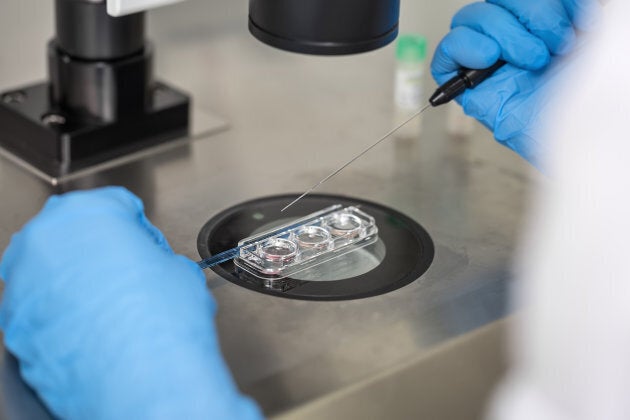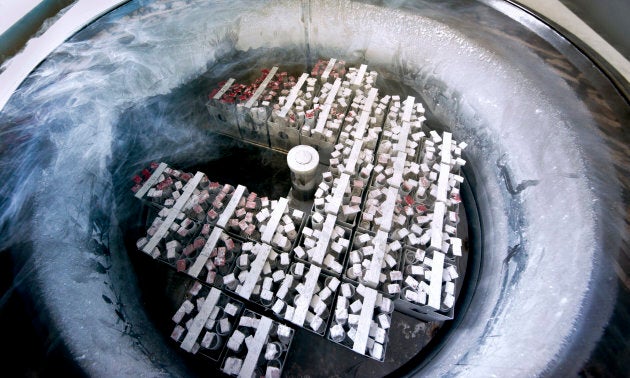There is a recent trend in the in vitro fertilization (IVF) community to freeze all of a prospective mother's embryos after an IVF cycle, then do an elective frozen embryo transfer. As a fertility doctor, I get asked about freeze all strategy by patients who have been reading online and chatting in IVF forums. It's true that freezing embryos may have some benefits, but not for everyone.

The freeze all strategy wasn't always desirable. Until 2012 or so, the majority of clinics in North America favoured fresh embryo transfer. The pregnancy rates, in the past, were much lower with frozen embryo transfer because the freezing technique (slow-freezing) made the embryos susceptible to damage from internal ice crystals. These days, most modern IVF clinics use vitrification to preserve embryos. This technique employs liquid nitrogen to instantly transform the embryo into a glass-like state. Vitrification does not harm the embryos and they can be stored indefinitely.
A freeze all strategy has two main benefits. The first, and biggest, benefit is that it decreases the risk of ovarian hyperstimulation syndrome (OHSS). In women who make more than 20 to 30 eggs and have very high estrogen levels, it is much safer to wait a month for the ovaries to shrink down to their normal size before becoming pregnant.
There were no differences in pregnancy rate or live birth rate.
The second benefit (which is still being debated in the scientific community) is that having a more "normal" estrogen level at the time of embryo transfer may result in a healthier pregnancy. Some studies have shown that a very high estrogen level at the time of embryo transfer (over 10,000 pmol/L) may slightly increase the risk of high blood pressure in pregnancy.
So, for most women undergoing IVF, which is better — fresh or frozen embryo transfer?

Two studies recently published in the prestigious New England Journal of Medicine attempted to answer that question. Both of the studies randomly assigned women to either fresh or frozen embryo transfer. Combined, they included nearly 3,000 women. Both of the studies showed that fresh and frozen embryo transfer were equally effective. There were no differences in pregnancy rate or live birth rate, nor pregnancy complications such as high blood pressure. The risk of OHSS was lower with frozen embryo transfer, which is consistent with previous research.
Trends in the infertility community are often quick to develop. In my experience, women going through IVF are extraordinarily motivated to be at their physical best, and to find the newest treatment. The freeze all strategy is an example of why doctors need to have the appropriate scientific research to support something, before making major changes to practice. Of course, each woman is unique. A fertility doctor is the best person to help personalize your IVF treatment.
Follow HuffPost Canada Blogs on Facebook
Also on HuffPost: